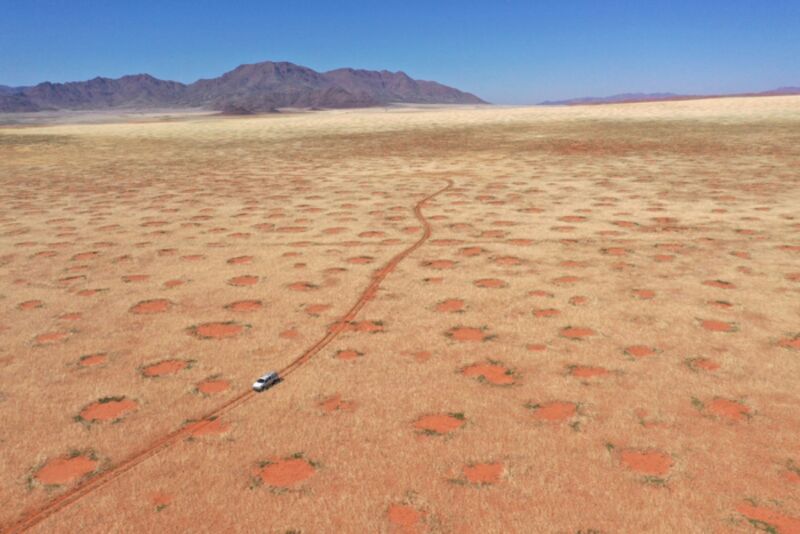Myth, busted: Formation of Namibia’s fairy circles isn’t due to termites

Enlarge / Drone image of car driving through the NamibRand Nature Reserve, one of the fairy-circle regions in Namibia. (credit: Stephan Getzin)
So-called "fairy circles" are bare, reddish-hued circular patches notably found in the Namibian grasslands and northwestern Australia. Scientists have long debated whether these unusual patterns are due to termites or to an ecological version of a self-organizing Turing mechanism. A few years ago, Stephan Getzin of the University of Gottingen found strong evidence for the latter hypothesis in Australia. And now his team has found similar evidence in Namibia, according to a new paper published in the journal Perspectives in Plant Ecology, Evolution and Systematics.
"We can now definitively dismiss the termite hypothesis, as the termites are not prerequisite to form new fairy circles," Getzin told Ars. This holds both for Australian and Namibian fairy circles.
As we've reported previously, Himba bushmen in the Namibian grasslands have passed down legends about the region's mysterious fairy circles. They can be as large as several feet in diameter. Dubbed "footprints of the gods," it's often said they are the work of the Himba deity Mukuru, or an underground dragon whose poisonous breath kills anything growing inside those circles.